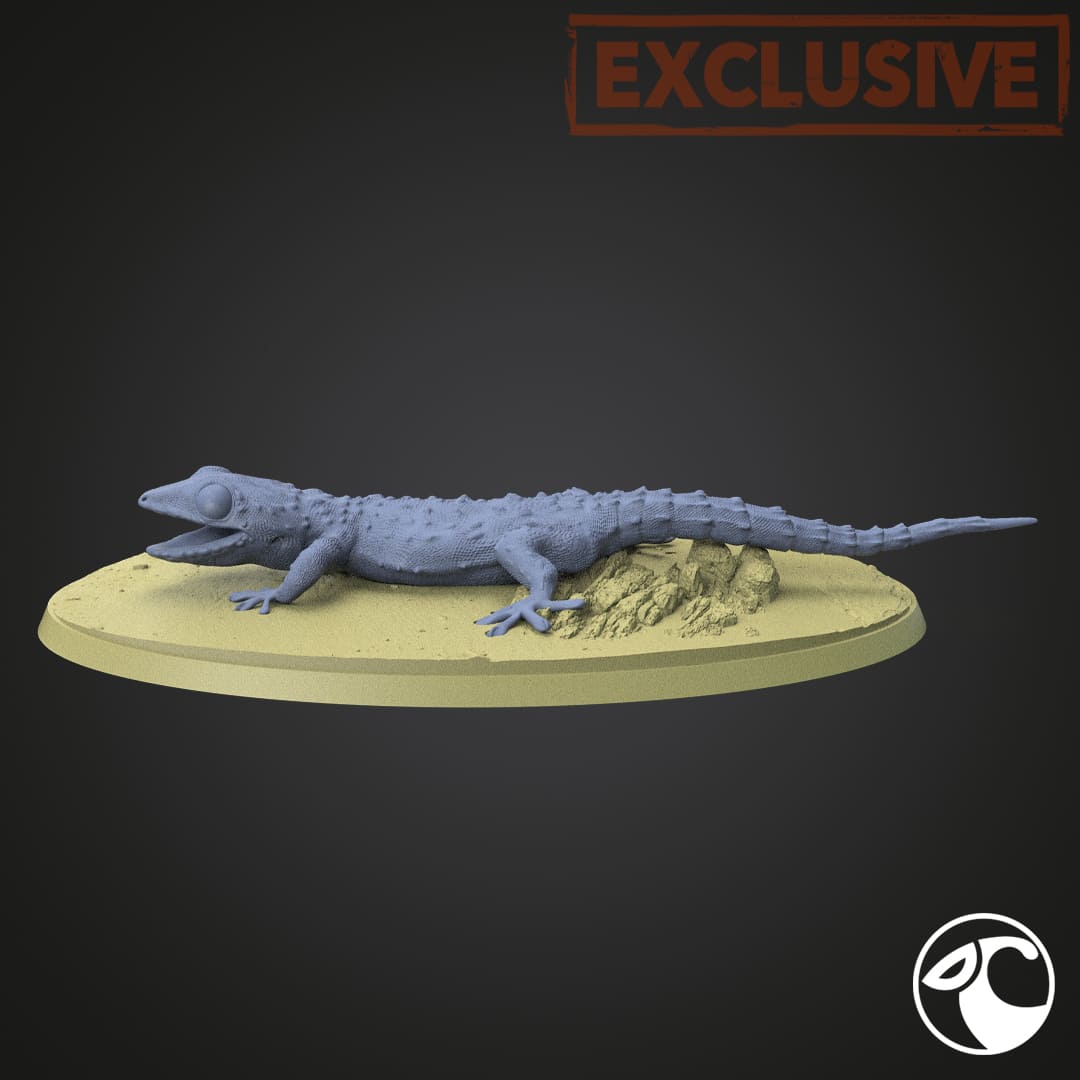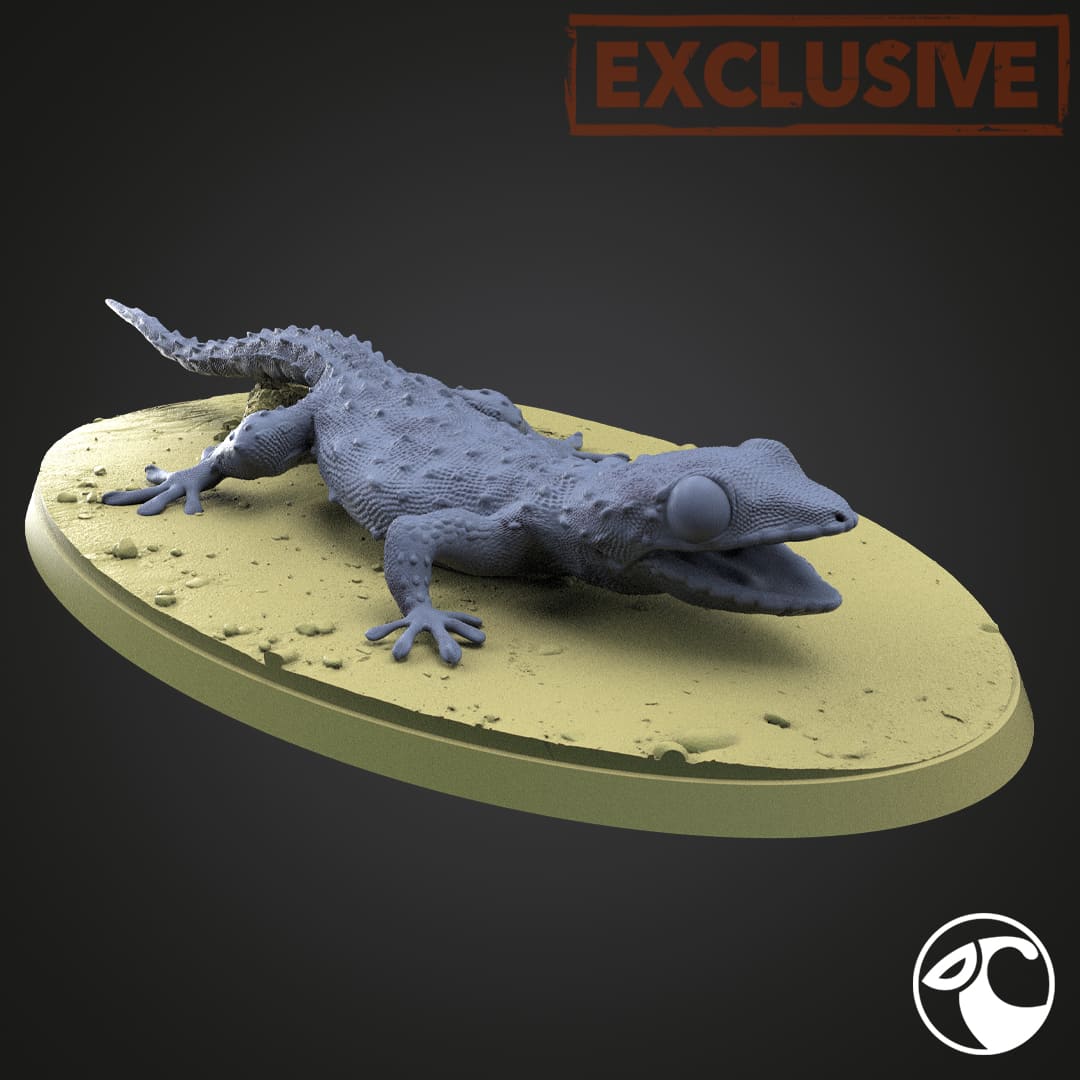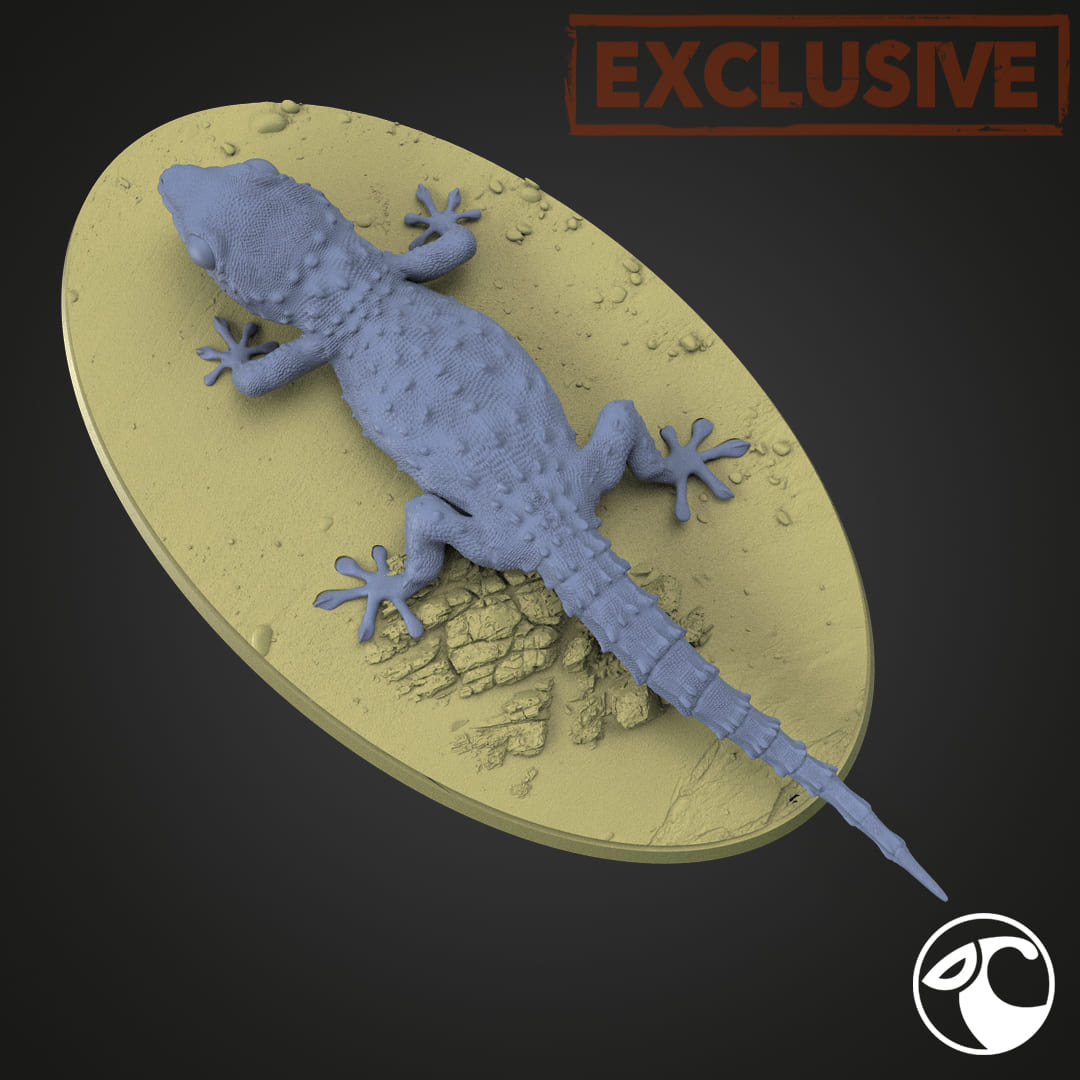




Tarentola mauritanica (common gecko)
Do you want another scale?
Contact us and we will make it possible!
How will you receive your replica?
In the unprimed and primed variants, you will receive the complete replicas except for the large models, where you will receive an assembly kit.
In the hand-painted variant, the replicas will be delivered complete.
How does the painting service work?
We created a private chat for you where you will have direct communication with our painter , being able to choose your preferred color schemes and follow the hand painting process closely.
Pairs well with

Tarentola mauritanica (common gecko)
If you have any questions, you are always welcome to contact us. We'll get back to you as soon as possible, within 24 hours on weekdays.
Shipping Information
Visit our shipping policy page to find all the information.
Customer Support
Give us a few details and we’ll offer the best solution. Connect by chat or email.
We are available 24/7.
FAQ’s
Visit our FAQ's page to find answers to common questions.
Contact Us
We'd love to hear from you. We are here to help. Visit our contact page to send us a message.
Product details
The Tarentola mauritanica is easily recognizable by its robust body, flattened head and large eyes, which provide excellent night vision. Its coloration can vary, but is generally grayish or brownish, with dark spots that allow it to camouflage itself in its environment. It can reach a length of 15 cm, including the tail. Like other geckos, it has adhesive pads on its toes, which allow it to climb smooth vertical surfaces with great dexterity, even on walls and windows of human buildings, which has helped it thrive in urban environments.
One of the keys to the survival and success of Tarentola mauritanica in the Anthropocene is its ability to adapt to environments modified by humans. This small reptile is very common in urban and rural areas, where it finds shelter in buildings, cracks and walls. In addition, its generalist diet, based mainly on insects and arachnids, allows it to take advantage of the abundance of prey that exists in these habitats. It hunts actively at night, using its excellent visual ability and fast reflexes to catch insects, often near artificial light sources, where insects congregate.
Human impact has, in many cases, favored the expansion of Tarentola mauritanica. The creation of urban structures and international trade have allowed this species to disperse to new areas. For example, it has been accidentally introduced to places such as the United States, where it has established populations outside its natural range. This ability to disperse and adapt to new environments reflects its resilience to the ecological changes of the Anthropocene, a period that has seen many other, less adaptable species decline.
However, the expansion of Tarentola mauritanica also has its challenges. Although it has thrived in many urban environments, human pressure on ecosystems and increasing urbanization also represent a potential threat. Light pollution, insect decline due to pesticide use, and the destruction of natural habitats are factors that may affect the populations of this gecko in the long term. Despite these challenges, its adaptability has allowed it to maintain stable populations in most of its range.
Another interesting aspect of Tarentola mauritanica in the Anthropocene is its interaction with other introduced species. In some areas, it has had to compete with other introduced reptiles, such as Hemidactylus turcicus, an equally adaptable gecko species. Although both species often coexist in the same habitats, competition for resources could affect the local distribution of Tarentola mauritanica in certain areas.
On an ecological level, Tarentola mauritanica plays an important role in controlling populations of insects and other invertebrates, both in natural environments and in urban areas. Its ability to feed on a wide variety of prey makes it an efficient predator in multiple ecosystems. In urban environments, it can help control insect pests, making it a beneficial species from a human point of view.
Approximate measurements of the Gecko:
- 1:1 Scale Complete
- Length 144 mm
- Height 21 mm
- Width 60 mm
- Snout-tail length 145 mm
Information about aftershocks
Collector's item ; Hyper-realistic replica, highly detailed and with a high degree of scientific precision.
Made to scale, prototyped in resin and with a scenic base in most of the models offered. If you like miniatures, both for collecting and for painting, we offer you a wide variety of scale replicas; All of them related to dinosaurs, extinct prehistoric fauna and current fauna.
So if you love dinosaurs and animals as much as we do, this is your favorite store to collect and paint them :)
We are authorized distributors of all the replicas and figures we offer. We use 3D printers with 8K - 14K resolution, and high-quality resins with additives to improve hardness and flexibility, thus offering replicas of impeccable quality.
Different scales will be used to make the replicas (depending on the size of the species), although we are open to making other suggested scales upon request as long as they fit in our printing trays, for which you will have to contact us via email and request the required size.
Replicas are supplied with the option of airbrush priming in dark grey. If you require another colour, please let us know which one you prefer in the box with special instructions for the seller. Without priming, we do not guarantee that the resin will accept paint.
We also offer the option of choosing a professionally painted replica, which is agreed upon throughout its development with the painter, through a private chat available.
Complete replica (one piece): We supply complete replicas in those models that are small, and models that are medium, large or not very bulky, will have the prerogative of being presented as a complete replica or assembly kit as the case may be.
Complete replicas will be supplied separately from their base.
Replica assembly kit: We supply replicas whose models are large, very large or bulky, only with this option.
The indicated replicas (generally composed of base, head, body and tail) will come prepared for the subsequent assembly that will be required by the client, by sanding, putty, adhesive or technique chosen by the client.
All replicas are thoroughly inspected before shipping and will be carefully packaged to prevent damage during transport.
Information about the models
The poses of the models aim to represent each character in the most scientifically viable way, thus revealing the life and customs of prehistoric and modern fauna.
Each character has its own personality and develops in different life scenarios; birth, adolescence and play, hunting, feeding, fighting, courtship, death and many other scenes from their daily life, always from the creative perspective of their designers.
Handmade
All orders are individually prepared on the cutter for subsequent prototyping, obtaining a resin part that will require post-processing by manual and ultrasonic cleaning, support removal, ultraviolet curing, labeling and packaging.

We are authorized distributors
We offer both our own physical replicas and those that have been modeled by many of the best 3D designers, in order to offer you the greatest possible variety.
Frequently Asked Questions
If you have any questions about products, orders or shipping, please read our FAQ page to learn more.

